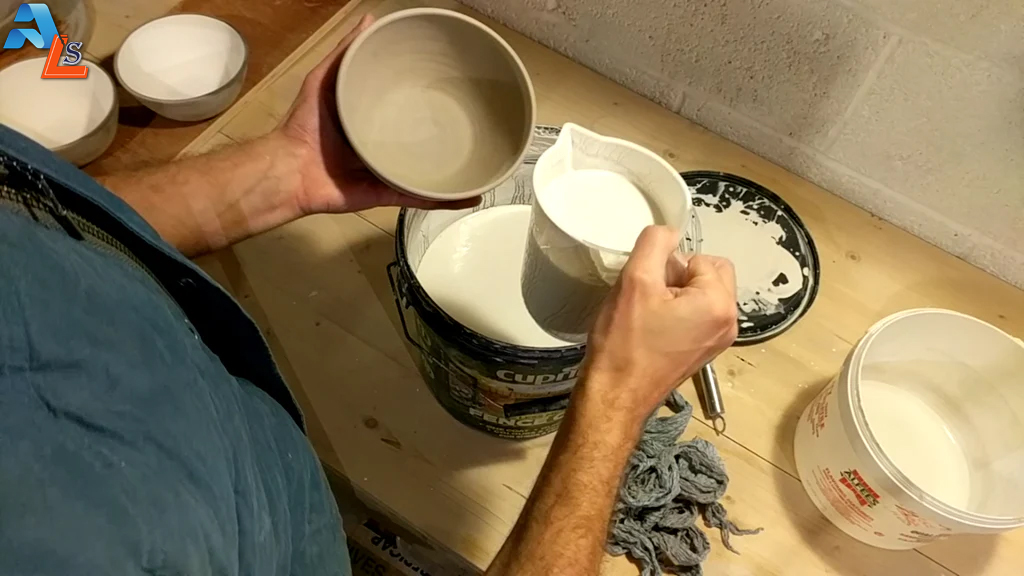Feldspar is a common silicate mineral distributed in the earth’s crust and is widely used in the ceramic industry. Feldspar can be divided into two main types: Soda Feldspar and Potassium Feldspar. In this article, we will explore the uses of Feldspar in ceramics and the differences between Soda and Potassium Feldspar in ceramics.
What is the Feldspar?
Feldspar usually appears in parallel stripes or columnar shapes, with a hardness of 6 on the Mohs hardness scale and a density between 2.55 and 2.75 g/cm³. The color of Feldspar can vary from white and pink to red or green. The chemical composition of Feldspar mainly includes Aluminum oxide (Al₂O₃), Silicon oxide (SiO₂), Soda oxide (Na₂O), Potassium oxide (K₂O), and Calcium oxide (CaO).

Application of Feldspar in ceramics:
- Adjust the sintering temperature: Feldspar contains a certain amount of Soda oxide or Potassium oxide, which can act as a flux in the sintering process of ceramics. When Feldspar melts at high temperatures, it forms a glass phase, which helps reduce the ceramic material’s overall sintering temperature. This not only improves production efficiency and reduces energy consumption, but also helps prevent deformation or cracking caused by excessive sintering of ceramics at high temperatures.
- Enhanced physical properties: The glass phase formed after melting Feldspar can fill the gaps between ceramic particles and increase the density of ceramics. This dense structure can significantly enhance its mechanical strength and wear resistance, giving ceramics higher hardness and wear resistance. In addition, the glass phase can enhance the fracture toughness of the ceramic and improve its impact resistance, thereby making the ceramic more durable.
- Adjust the color and glaze: Feldspar has a variety of colors, and the color of the ceramic can be further adjusted by adding different metal oxides. For example, adding cobalt oxide can obtain blue ceramics, while adding iron oxides can produce red or brown effects. At the same time, the glass phase in Feldspar can also increase the gloss of the ceramic surface, making it more beautiful. Different types of Feldspar have different chemical properties, which can affect the final performance and appearance of the glaze.

Soda, Potassium Feldspar applied to ceramics distinction:
- Melting characteristics:
- SodaFeldspar: Its melting temperature is relatively low, usually between 1120~1250℃, and the melting range is narrow. This means that during the ceramic sintering process, Soda Feldspar can melt faster and participate in the formation of the glass phase. However, due to the low melting temperature and narrow range, more precise temperature control may be required to prevent over-sintering.
- Potassium Feldspar: Its melting temperature is relatively high, generally between 1130~1450℃, and the melting range is wide. This makes Potassium Feldspar have better stability at high temperatures, which helps prevent the deformation of ceramics during high-temperature sintering. At the same time, the wider melting range also provides greater process flexibility for ceramic firing.
- Melt viscosity:
- Soda Feldspar: The melt viscosity is relatively low, and the viscosity decreases rapidly as the temperature rises. This may cause the ceramic product to deform or collapse during the firing process in some cases.
- Potassium Feldspar: The melt viscosity formed at high temperatures is relatively high, and the viscosity decreases slowly as the temperature rises. This property is beneficial to maintaining the stability of the shape and preventing product deformation during the ceramic firing process.
- Melting effect:
- Soda Feldspar: It has a strong melting effect on ceramic raw materials such as quartz, clay, and mullite, and can quickly promote the melting and fusion of these raw materials at high temperatures. This makes Soda Feldspar particularly useful in glaze formulations, as it enhances the adhesion and smoothness of the glaze layer.
- Potassium Feldspar: Although it also has a certain melting effect, it may not be as significant as Soda Feldspar. However, the unique feature of Potassium Feldspar is its ability to form a more stable glassy phase structure at high temperatures, which helps improve the heat resistance and chemical stability of ceramic products.
In summary, Feldspar plays a vital role in ceramic production, and Soda Feldspar and Potassium Feldspar each have their own unique characteristics and application fields. Producers can choose the appropriate Feldspar type according to specific process requirements and product characteristics to optimize the ceramic manufacturing process and the quality of the final product.



